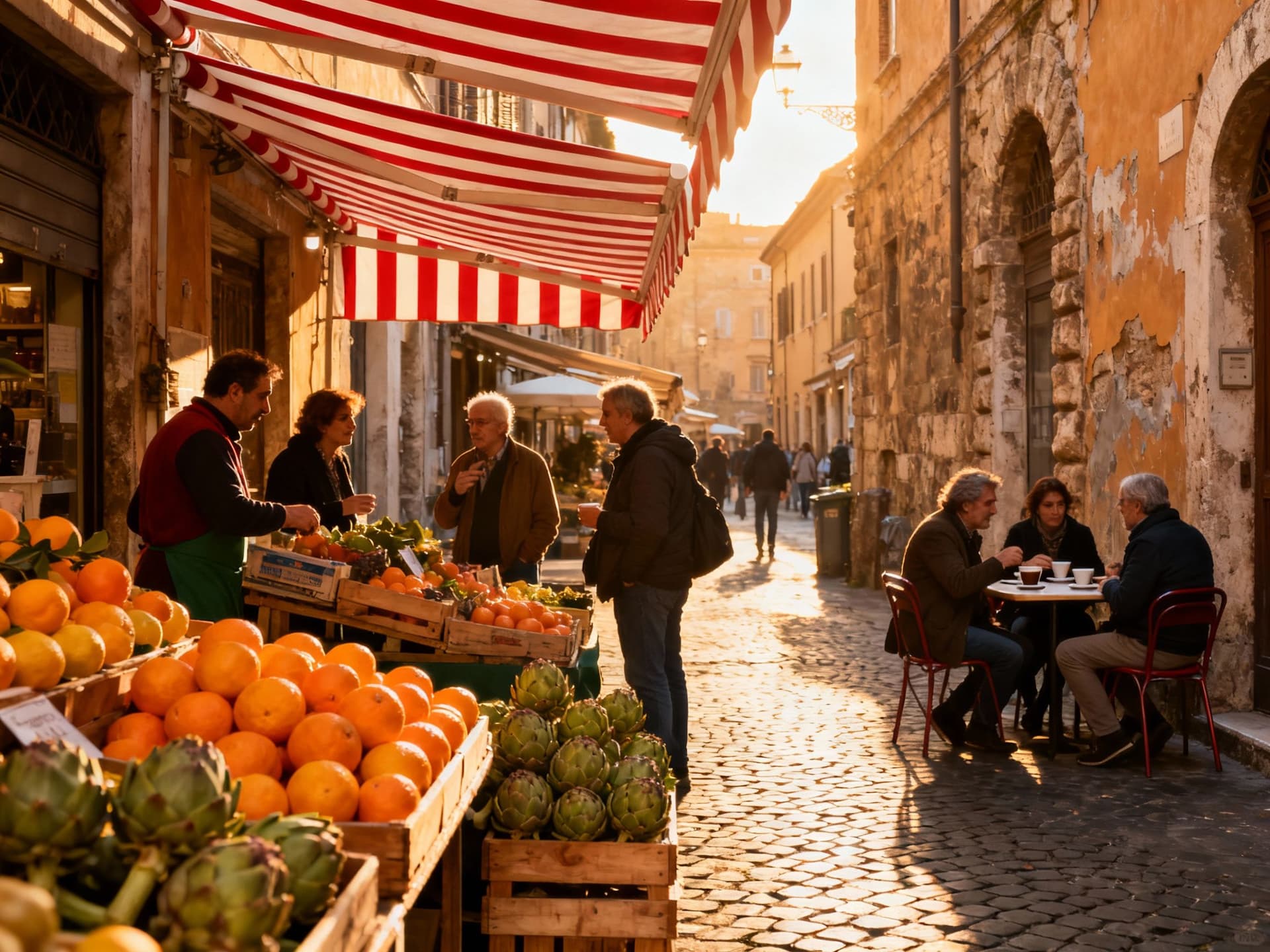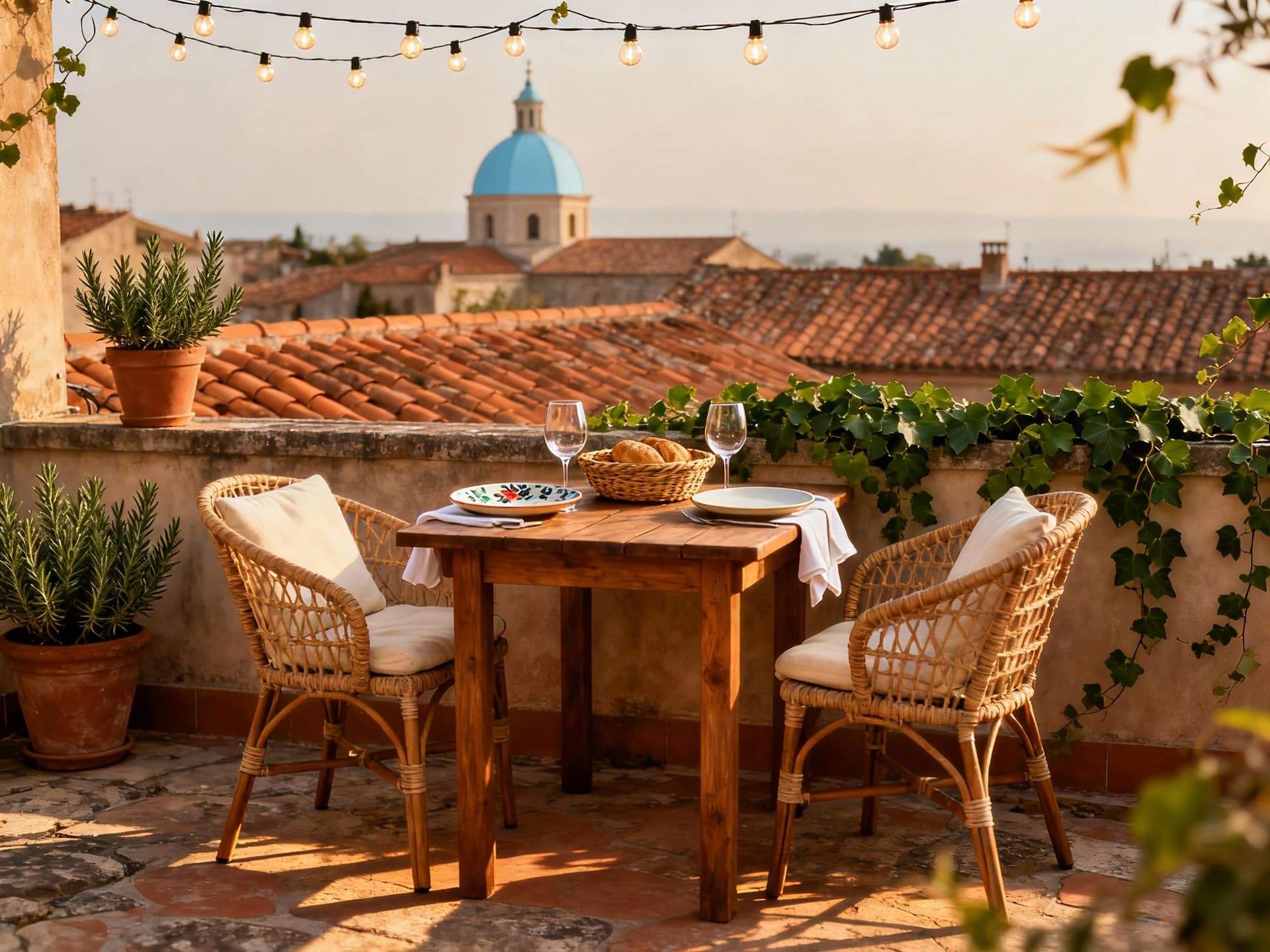Where Italy’s Lifestyle Meets Market Reality
Italy blends neighbourhood rituals with wide market variation: buy where daily life matches your priorities and use seasonal visits plus local agents to convert romance into a resilient purchase.
Imagine a late‑morning in Trastevere: espresso on a cracked terracotta table, a vendor stacking fresh artichokes at the Porta Portese market, church bells and scooters threading the cobbled streets. Italy moves at several paces at once — relaxed coastal afternoons, brisk financial mornings in Milan, slow vineyard Sundays in Tuscany — and each pace shapes where and how people buy property. For an international buyer, Italy isn’t a single market; it’s a mosaic of rhythms, regulations and local tastes. The emotional pull is unmistakable, but making that feeling translate into a sustainable purchase takes ground‑level knowledge and current market facts.
Living the Italy lifestyle: rhythm, food and neighbourhoods

Daily life in Italy is sensory and local: morning espresso rituals, lunchtime markets that shut a little earlier than you’d expect, aperitivo that stretches into the evening. In city centres like Milan and Rome the tempo is professional and cultural; coastal towns such as Positano or Cefalù follow tidal patterns — restaurants, ferries and small shops pulse with the tourist calendar. Understanding these rhythms helps you decide whether you want a pied‑à‑terre for culture, a family home near good schools, or a rental asset that performs through summer. Reported shifts in investor interest show Rome attracting buyers who find Milan prohibitively priced, which directly affects where lifestyle and value converge.
Rome: layered history, roomy apartments, neighbourhood character
Walk from Trastevere to the Tiber at dusk and you’ll feel why many buyers choose Rome: 19th‑century palazzos, narrow artisan streets, and piazzas that still host neighbors rather than tourists. Areas like Prati or Monteverde offer wider streets and quieter family life; Testaccio and Pigneto attract food and nightlife scenes. Properties here often come with higher renovation needs — classic plaster, old wiring, and restrictions on façade changes — but the payoff is immediate: you live inside history and a neighbourhood community that operates year‑round.
Milan & the north: modern life, design, and short supply
If your life revolves around finance, design, and fast public transport, Milan’s neighbourhoods — Brera, Navigli, Porta Nuova — answer that call. Milan’s limited historic centre stock and high demand keep prime prices elevated, while the periphery offers relative value and newer constructions with energy‑efficient systems. Buyers often trade a smaller central apartment for larger, greener living on the edges; for many internationals the proximity to international schools and business hubs matters more than historic charm.
- Lifestyle highlights: markets, beaches, and local rituals
- Morning espresso in a bar (e.g., Caffè Greco, Rome) and a second espresso after lunch — Italian coffee culture is about rhythm, not quantity.
- Weekend market runs: Mercato Centrale (Florence), Mercato di San Lorenzo, or Turin’s Porta Palazzo for local produce and socialising.
- Coastal rituals: late afternoon passeggiata on Liguria’s lungomare or Sardinia’s quieter coves outside July–August.
Making the move: practical considerations that preserve lifestyle

Your emotional shortlist — historic terrace, sea view, or a kitchen for long Sunday lunches — must be tested against market reality. Average asking prices in Italy sit around €2,100/m² as of mid‑2025, but city and regional variance is large: Milan and central Florence exceed €4,000–5,000/m² while rural southern areas can be under €1,000/m². That gap creates strategic possibilities: buy less centrally for more outdoor space, or accept a compact central apartment to live inside the culture. Understanding these ranges upfront keeps lifestyle priorities intact and prevents emotional over‑paying.
Property types and what they actually deliver
A historic apartment in a palazzo gives you high ceilings and character but often demands costly renovations and bureaucratic approvals for works. New build condominiums offer energy performance, parking and lifts — useful if you plan to rent or live year‑round. Rural stone houses offer space and privacy but expect higher maintenance and weaker broadband, which matters if you work remotely. Match property type to how you will spend time: if cafes and walking define your days, prioritize centrality over square metres.
Local agents who preserve the lifestyle you want
Work with agencies that specialise in the neighbourhood rhythm you want — not generic national desks. A Milan agent should know which streets trade better for professionals vs families; a Rome agent should explain conservation rules for ottocento facades. Good local agents arrange off‑market viewings, explain renovation permit timelines, and connect you to vetted local artisans. For internationals, bilingual agents who also work with notaries and accountants reduce friction and protect your lifestyle plan.
- Steps to align lifestyle with purchase decisions
- List the three non‑negotiables (e.g., school, proximity to a market, daily seaside walk) and rank neighbourhoods against them.
- Agree budget bands reflecting renovation and local taxes, then test them against advertised prices and recent comparable sales.
- Book immersive visits across seasons: summer for coastal life, spring/autumn for neighbourhood texture and services.
Insider knowledge: what expats wish they'd known
Expats often describe two surprises: the persistence of local bureaucracy and the degree to which neighbourhood life determines long‑term happiness. Official processes — utility transfers, cadastral updates, and historic‑building consents — take longer than in many countries. Meanwhile, the small daily rituals (your greengrocer knowing how you take tomatoes) determine whether a place becomes home. Knowing both realities helps you buy a property that supports everyday joy rather than just Instagramable moments.
Language, community and making local life yours
Learning basic Italian repays itself in ways a renovation budget cannot. Simple phrases open doors at the market, remove friction with contractors, and create goodwill with neighbours. Join local associations — pro loco committees, voluntary food markets, or language exchanges — to accelerate integration. These networks also reveal practical property intelligence: where contractors are reliable, which streets flood after heavy rain, and where future local improvements are planned.
Long‑term lifestyle and property durability
Think beyond purchase: energy upgrades, insulation, and resilience to heat or coastal humidity are non‑negotiable for long‑term comfort and costs. Energy‑efficient homes command a premium in Italy and are increasingly valued by tenants if you rent the property. Also consider mobility: towns with reliable regional trains (e.g., towns on the Turin–Milan or Bologna–Florence lines) age better as remote work patterns or part‑time living evolve. A property that matches your lifestyle now and has flexible use cases (rental, family, or second home) protects both life and investment.
- Red flags to spot on viewing days
- Hidden damp or rotten timbers in basements and attics — ask for recent structural reports.
- Unclear condominium minutes and pending extraordinary works — check the condominio’s recent meeting notes and reserve funds.
- Inconsistent cadastral records vs the advertised floor area — verify with a local surveyor and the Agenzia delle Entrate planimetry.
Conclusion: Italy as a lived decision — taste first, technicals after
Italy seduces because life here is textured and local; the practical part of buying is about aligning that texture with regulations, seasons and realistic budgets. Start with lifestyle visits across different seasons, prioritise the three daily rituals that matter most to you, then bring local agents, notaries and surveyors into the plan. If you pair an honest vision of life in Italy with up‑to‑date market data and neighbourhood expertise, you’ll buy a property that feels like a daily choice — not a once‑off spectacle.
British investor turned advisor after buying in Costa del Sol since 2012. Specializes in cross-border compliance and data-driven investment strategies for UK buyers.


